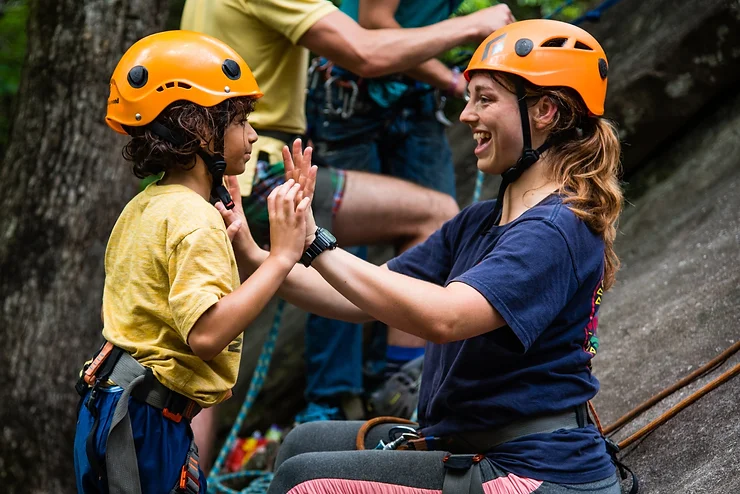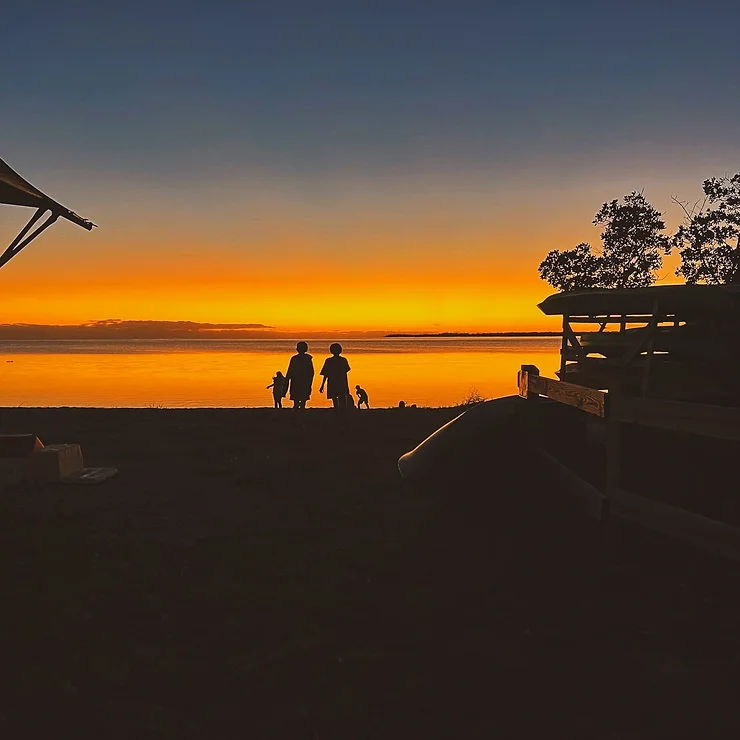Outdoor adventure camps provide growth experiences for youth and young adults. Through days filled with fun and challenging activities like whitewater rafting, rock climbing, and canoeing, campers make friends and learn valuable lessons that can benefit them at home, in school, and in life. However, adventure camps are sometimes confused with wilderness therapy programs.

Wilderness therapy programs have been around since the early 1960’s, aimed at helping parents manage their “troubled teens.” However, as time passed the name wilderness camp came to be applied to wilderness therapy programs. This has caused great confusion among families searching for non-therapeutic, adventure-based options for their youth.
Although both adventure camps and wilderness therapy programs use the outdoors as a setting, they differ in important ways. These are comparable to the differences between life coaching, which focuses on setting and achieving goals, and therapy, which focuses on mental health and emotional healing.
Similarly, adventure camps promote independence, teamwork, and self-growth through a “challenge by choice” model that participants have signed up for. In contrast, wilderness therapy typically uses remote wilderness settings to isolate participants, often not of their free will, with the expectation that they must accomplish a series of goals to successfully transition out of the program.

Other Differences
Adventure camps offer distinct summer experiences centered around outdoor adventure activities. Participants can expect thrilling days brimming with activities like rock climbing, hiking, kayaking, mountain biking, surfing, horseback riding, and other activities. Adventure-based summer camps epitomize the spirit of exploration, offering a wide range of outdoor activities designed to foster camaraderie, resilience, and a love for nature. They may incorporate life-skill development but without therapeutic elements.
While adventure camps focus primarily on having fun and building skills, wilderness therapy programs focus on therapeutic interventions for adolescents facing emotional, behavioral, or mental health challenges. These require a more structured and therapeutic approach and oversight.
Here are three ways outdoor adventure camps benefit youth, including those with ADHD and other learning disabilities:
1. Adventure Camps Boast a Diverse Array of Activities, Catering to a Range of Interests and Skill Levels. From hiking and rock climbing to canoeing and archery, campers have the opportunity to try new experiences and push their boundaries in a supportive and supervised environment.
2. Adventure Camps Provide Opportunities for Social Interaction and Teamwork. Campers learn social skills through programs that improve interactions with their peers and encourage them to build lasting friendships. As they navigate challenges together, campers build communication skills, empathy, and a sense of belonging and grow as individuals and as part of a group.
3. Adventure Camps Provide Valuable Opportunities for Personal Growth and Self-Discovery. Through activities such as whitewater paddling, rock climbing, and backpacking, campers learn to overcome obstacles, develop confidence, and gain independence as they tackle new challenges and step outside their comfort zones.

In conclusion, adventure-based summer camps and wilderness therapy programs have very distinct program goals and methods geared toward participants with different needs. While adventure camps provide a fun and enriching environment for skill-building and social interaction for participants who choose to come, wilderness therapy programs use an outdoor setting to support adolescents in overcoming specific challenges through clinical intervention, whether participants have volunteered to come or are delivered into the program against their will.
By understanding the differences between these two types of outdoor experiences, parents can make informed decisions that align with their child’s needs and aspirations.
About the Author: John Willson, MS, LRT/CTRS (Licensed Recreational Therapist/Certified Therapeutic Recreational Specialist), is Executive Director for SOAR, the world’s premier adventure program serving youth with ADHD (Attention Deficit Hyperactivity Disorder) and LD (Learning Disabilities).
SOAR’s outdoor adventure-based programs provide academic instruction, experiential education, and life skills development for youth and young adults ages 8-25. SOAR stands for Success-Oriented, Achievements Realized. With a passion for fostering resilience and nurturing strengths in neurodiverse communities, John is a respected advocate among those who serve individuals with learning differences and attention challenges. Learn more at soarnc.org.




